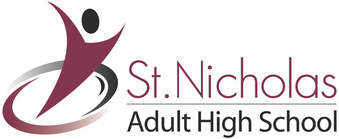Math Department
FINAL ASSESSMENT STUDYING AND WRITING TIPS
1) Review lessons and make study notes
Summarize what you learned in each activity. Use your activity quizzes and unit assessments to pay particular attention to concepts that you struggled with. Get clarification on these sections, if necessary.
The style of study notes is an individual preference (use of examples, formulas, pictures, etc.) Do what works for you, but remember that too much in your notes will just overwhelm you and too little will not prepare you.
2) Complete the Final Assessment review questions without referring to notes
It is strongly recommended that students review their notes prior to attempting these questions and then put away the notes while doing the review. In this way, students can determine the sections of the material that require additional review or clarification from the teacher. By going back and forth between notes and review, without working with both simultaneously, students learn to develop and rely upon their own knowledge base.
If a practice Final Assessment is provided, use the same strategy: grant yourself the time allotted and attempt to do the entire exam without looking at your notes. If no practice exam is provided, it is often not difficult to find one on the internet. Try searching your course code with "practice exam" (i.e. MAP4C practice exam).
3) Develop an Final Assessment writing strategy
Time management is often a big factor for students writing Final Assessments. Some strategies are listed below. You can use one of these strategies, or a combination, or research and develop your own (as long as it is effective).
1) Review lessons and make study notes
Summarize what you learned in each activity. Use your activity quizzes and unit assessments to pay particular attention to concepts that you struggled with. Get clarification on these sections, if necessary.
The style of study notes is an individual preference (use of examples, formulas, pictures, etc.) Do what works for you, but remember that too much in your notes will just overwhelm you and too little will not prepare you.
2) Complete the Final Assessment review questions without referring to notes
It is strongly recommended that students review their notes prior to attempting these questions and then put away the notes while doing the review. In this way, students can determine the sections of the material that require additional review or clarification from the teacher. By going back and forth between notes and review, without working with both simultaneously, students learn to develop and rely upon their own knowledge base.
If a practice Final Assessment is provided, use the same strategy: grant yourself the time allotted and attempt to do the entire exam without looking at your notes. If no practice exam is provided, it is often not difficult to find one on the internet. Try searching your course code with "practice exam" (i.e. MAP4C practice exam).
3) Develop an Final Assessment writing strategy
Time management is often a big factor for students writing Final Assessments. Some strategies are listed below. You can use one of these strategies, or a combination, or research and develop your own (as long as it is effective).
|
A) Leave multiple choice until the end and answer/guess every question
These questions are worth only one mark each ...use you time to do the full solution question worth more marks for the same amount of work. At the end, if you are short on time, you can always guess on the multiple choice questions...25% chance of getting it right and no penalty for getting it wrong. This is also the reason why you never leave multiple choice questions blank...it is a no risk, all reward venture! B) The three-pass method The three pass method can also be referred to as the low-hanging fruit method...pick the questions that require the least effort first. First Pass: Read every question and quickly classify them into three categories:
It is also a good idea just to re-read the ? questions...sometimes doing other questions in the first pass will trigger some knowledge to help these become more do-able. Third Pass: These are the thinkers that will need more time and energy, but since the easier marks have already been grabbed, you have the time to spend contemplating these questions. If time, a fourth pass is recommended to check over all of your answers! C) The mark-a-minute method Most exams and midterms will be have between 90 and 120 marks. If you allocate one mark per minute, on a two hour exam, you should have sufficient time to complete the exam. If a 4 mark question has taken you longer than 4 minutes, leave it and come back to it if you have time at the end. Keep in mind that this rule applies to multiple choice questions (which are only worth one mark each) as well as full solution questions! If you have a section of 20 multiple choice questions at the beginning of the exam, do not spend more than 20 minutes on that section. |
